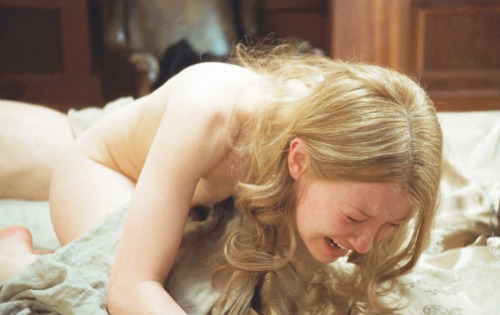Eyes Wide Shut: Some Call It Loving and Sleeping Beauty By Adam Nayman
By Yasmina Tawil
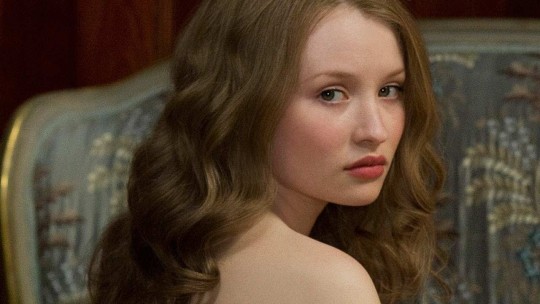
Two roads diverged in a (Holly)wood: after the scandalous release of Lolita in 1962, Stanley Kubrick and his producer, James B. Harris, each set out to make a Cold War thriller based on a best-selling novel.
Suffice it to say that history remembers Dr. Strangelove, or: How I Learned to Stop Worrying and Love the Bomb (1964)—a movie that Harris helped to set up before blanching at his partner’s idea to turn it into a comedy—more vividly than the foursquare nuclear-sub drama The Bedford Incident (1965). Splitting from Kubrick on the eve of the director’s greatest popular success rendered the New York-born Harris as the proverbial footnote in a world-beating auteur narrative, a marginalization seemingly borne out by the fact that he only produced five features over the next forty years, three of which he also directed.
The most striking of these is Some Call It Loving (1973), a stylized erotic drama privately financed via a tax break scheme for $400,000. In a superbly written and researched essay included with the recent two-disc set from Etiquette Pictures, Kevin John Bozelka explains that Harris brought Some Call it Loving to Cannes in 1973, where it was critically admired (including by Pierre Rissient, who bought it for French distribution) and then destroyed by American reviewers later in the year. The film’s slow, stately style and baldly symbolic content were laughed off on contact: “a rambling, contemporary fable that is merely pretentious,” was the assessment of The New York Times.
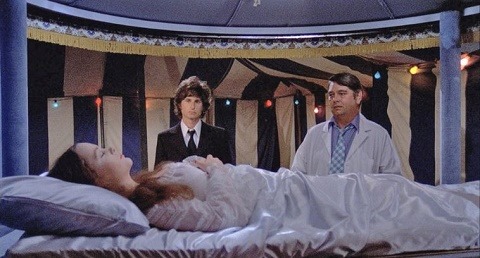
Pretentiousness is in the eye of the beholder, of course, but there’s nothing “mere” about Harris’ adaptation of John Collier’s short story “The Sleeping Beauty,” about a man who purchases a mysteriously slumbering woman from a traveling carnival and brings her home to be his companion. On the contrary, Some Call it Loving is fully, aggressively pretentious, wearing both its fable-like aspirations and caustic cultural critique on its impeccably tailored sleeves. Its characters live in the contemporary equivalent of an enchanted castle on the edge of the city, deliberately cut off from everyday society. The elaborate role-playing games of Robert Troy (Zalman King) and his female companions Angelica (Veronica Anderson) and Scarlett (Carol White)—which expand to include the expensively acquired and newly awakened Jennifer (Tsia Farrow)—are legible as a form of aristocratic folly: call it the discreet charm of the bourgeoise.
Luis Buñuel’s shadow falls over Some Call it Loving, particularly the scene in Viridiana (1961) where the angelic novice played by Silvia Pinal is drugged by a servant and served up to the unscrupulous Don Jaime (Fernando Rey); Bunuel luxuriates in the necrophilic aspects of the scenario even as his villain holds back from ravishing the unconscious virgin (a decision that plays as a pious hypocrite’s moment of grace). In Harris’ opening, Robert gazes uncertainly at Jennifer’s supine body and refuses to join the other carnival-goers in paying for a kiss; when he makes his offer of $20,000 to Jennifer’s handler, he shakes off the implication that he’s buying her for sex. Like Don Jaime, he’s powerfully attracted to the younger woman’s sleeping form, which also rhymes with the plight of Humbert Humbert (James Mason) and his botched motel-room rape of his sleeping charge in Lolita—the difference being in Kubrick’s film, it’s bad luck rather than a guilty conscience that keeps him from following through.
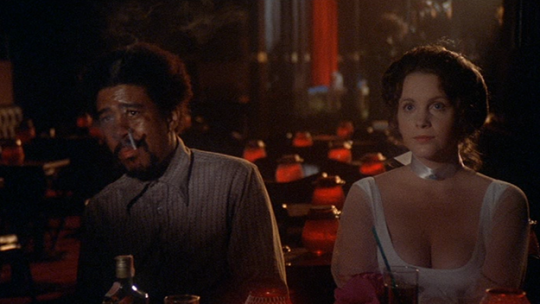
Viridiana, Lolita, and Jennifer all exist on the same basic continuum of characterization: they’re innocents whose purity, as defined by the men in their lives, most powerfully underlined—again, for those men—in moments of utter helplessness. Robert’s protectiveness of Jennifer, even after she’s woken up, suggests that he very much sees himself as a Prince Charming figure, and the tragic irony of Harris’ film—which significantly diverges from its source text—is that his dream girl is all too willing to play the passive princess. In Collier’s story, Jennifer defies and declaims her owner, similar to what happens in Lolita where Dolores Haze revels in adolescent willfulness where Humbert expects simple compliance. Farrow’s Jennifer, though, remains happily dazed, and Robert’s anxiety comes not out of the eradication of his fantasies, but the very real possibility of their fulfillment.
“[Robert] sees [Jennifer’s] potential for openness and authenticity and grows frustrated that she willingly submits to an abstract notion of freedom which effectively restricts those qualities,” writes Nathaniel Drake Carlson, incisively honing in on just how devastatingly Some Call it Loving frames the feminist identity politics of the 1970s. Because Jennifer stubbornly refuses to raise her own consciousness—instead choosing to embrace her designer-object status—Robert pre-emptively anesthetizes it once and for all. The ending, where Robert drugs Jennifer back into a comatose state—while she’s wearing a nun’s habit, recalling Viridiana—is heartbreaking as it juxtaposes the figurative “death” of one character with the emotional paralysis of another. With this in mind, the coda, which sees Robert re-invented as the carnival barker hawking his prized possession to a midway crowd, is not merely cynical but deeply sad. Harris’ achievement was to cloak his critique of vain male control-freakery in the vestments of sexploitation, a disguise hat succeeded all too well, as Some Call It Loving’s judiciously staged and edited longeurs were mistaken for simple pervy indulgence.
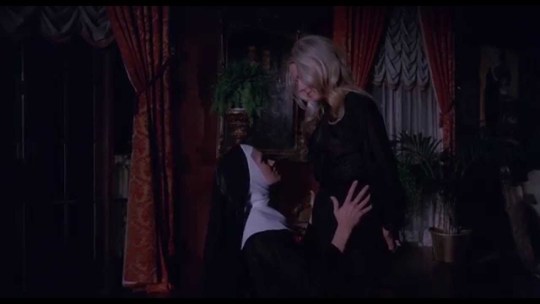
Nevertheless, there are some recent films that bear signs of Some Call it Loving’s influence. Carson has observed the correspondences between it and David Lynch’s Lost Highway (1995), which borrowed Robert’s occupation as a jazz musician for Bill Pullman’s schizophrenic hero and echoed Harris’ casting of Richard Pryor in a supporting role. (Pryor’s anguished, unguarded performance as a junkie in Some Call it Loving is frankly astounding and deserves its own essay.) Peter Strickland’s critically admired—and overtly Buñuelian—chamber piece The Duke of Burgundy (2014) has a lush ‘70s colour palette and role-playing narrative that are detailed enough to be an homage. And then there’s Julia Leigh’s chilly psychological thriller Sleeping Beauty (2012), a film that feels in many ways like an answer to Harris, Buñuel, Kubrick and the Grimm fairy tale tradition evoked in its title.
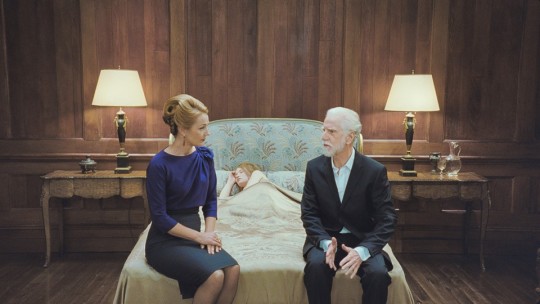
Set in a contemporary Australia photographed to seem as sleek and underpopulated as any sci-fi futurescape, Sleeping Beauty essays a quasi-prostitution scheme in which willing young women check into a country estate. Once there, they’re knocked out and left splayed and naked in a king-size bed for well-monied men to fondle and fawn over: anything short of sexual penetration, which would damage the merchandise and violate the fetishistic spirit of the entire enterprise. Leigh’s strategy in her feature debut is to take the basic scenario of Japanese writer Yasunari Kawabata’s 1961 House of the Sleeping Beauties—a book beloved by Gabriel García Márquez, who paid tribute to it in Memories of My Melancholy Whores—and switch the perspective from an elderly client to one of the putative concubines: Lucy (Emily Browning), whose early willingness to monetize her body (the film opens with her participating in an invasive medical experiment on a university campus) is complicated by a dawning, gnawing desire to know exactly what’s going on during her blackouts.
Critics were split on the efficacy of Leigh’s visual style in Sleeping Beauty, which deliberately riffs on the stark, master-shot elegance of Kubrick (and Michael Haneke), as well as whether or not showing what happens to Lucy while she’s unconscious—in repeated scenes that have Browning lifted and buffeted about by male actors—added or detracted from her attempt to reclaim the material from a male gaze. In a wonderfully written post at Mubi, Dan Sallitt writes that “organizing image of the film, unconscious Lucy awaiting her predators in a luxurious bed, is photographed from such a distance and with such symmetry that her body suggests nothing other than a corpse laid out for viewing,” a Viridiana-ish arrangement which complicates the underlying sense of prurience. With this in mind, the final scene, in which Lucy tries gamely to fight against the sleeping drug in her system in order to set up a hidden camera to capture evidence of her “non-existence” (as Sallitt puts it), can be seen as much as being about Leigh, as a female director, wresting control of the image as her heroine’s attempt at solving a sinister existential mystery.
That the visitors in Sleeping Beauty all follow the “house rules” doesn’t mean that they exercise restraint, exactly: one recklessly throws Lucy around like a rag doll, while another cruelly burns a cigarette butt against the back of her neck. In this way, Leigh is perhaps less sentimental than Harris (or Buñuel) in implying that men desire a form of control or superiority over an oblivious partner, a context that transforms their weakness—and given the non-penetrative mandate of the establishment, their impotence—into a pathetic form of strength. Lucy’s need to know what’s happening to her while she’s asleep echoes Jennifer’s monologue in Some Call it Loving where she hazily struggles to recall being kissed by many men in succession, a subconscious acknowledgment of her past as a paid attraction. (Another coincidental but apposite parallel: Nicole Kidman recounting her nightmare to Tom Cruise in Eyes Wide Shut.) But where Harris locates tragedy in Robert’s inability to truly let Jennifer wake up, Leigh goes for a more overtly sociological form of horror. Lucy’s realization that one of the clients has died during the night beside her is both a monstrous visual pun on “let petit mort” and a reprimand to her complicity in her own peril. (Her hysterical reaction upon watching the videotape turns her into Amy Irving at the end of Carrie, another young woman who can’t seem to extricate herself from a nightmare.)
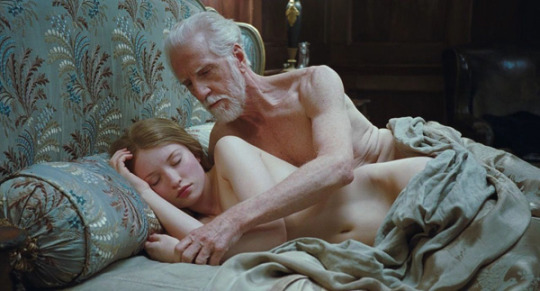
Sleeping Beauty’s finicky clinicism contrasts with Some Call it Loving’s lugubrious artiness, and yet both films are engaged with fantasy role-play in a way that concedes its appeal while hinting at the dangers of such an arrangement. They prove most instructive as a double bill—two very differently angled and yet fundamentally compatible explorations of the gap between female representation and subjectivity, in life and more obviously in Leigh’s case, at the movies. Both filmmakers reflect and challenge Godard’s famous statement that cinema is “the history of boys photographing girls.” Leigh allows Lucy to turn the desirous lens on herself, while Harris sentences Robert to the purgatory of exploiting his lover’s image, one paying customer at a time, an anti-grace note of eyes-wide-shut denial as haunting as anything in American moviemaking—Stanley Kubrick included.
